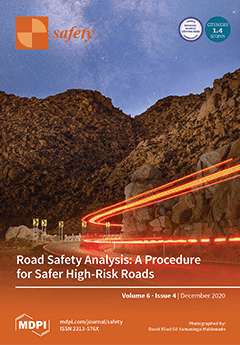Open AccessEditor’s ChoiceReview
On Driver Behavior Recognition for Increased Safety: A Roadmap
by
Luca Davoli, Marco Martalò, Antonio Cilfone, Laura Belli, Gianluigi Ferrari, Roberta Presta, Roberto Montanari, Maura Mengoni, Luca Giraldi, Elvio G. Amparore, Marco Botta, Idilio Drago, Giuseppe Carbonara, Andrea Castellano and Johan Plomp
Cited by 24 | Viewed by 10193
Abstract
Advanced Driver-Assistance Systems (ADASs) are used for increasing safety in the automotive domain, yet current ADASs notably operate without taking into account drivers’ states, e.g., whether she/he is emotionally apt to drive. In this paper, we first review the state-of-the-art of emotional and
[...] Read more.
Advanced Driver-Assistance Systems (ADASs) are used for increasing safety in the automotive domain, yet current ADASs notably operate without taking into account drivers’ states, e.g., whether she/he is emotionally apt to drive. In this paper, we first review the state-of-the-art of emotional and cognitive analysis for ADAS: we consider psychological models, the sensors needed for capturing physiological signals, and the typical algorithms used for human emotion classification. Our investigation highlights a lack of advanced Driver Monitoring Systems (DMSs) for ADASs, which could increase driving quality and security for both drivers and passengers. We then provide our view on a novel perception architecture for driver monitoring, built around the concept of Driver Complex State (DCS). DCS relies on multiple non-obtrusive sensors and Artificial Intelligence (AI) for uncovering the driver state and uses it to implement innovative Human–Machine Interface (HMI) functionalities. This concept will be implemented and validated in the recently EU-funded NextPerception project, which is briefly introduced.
Full article
►▼
Show Figures





